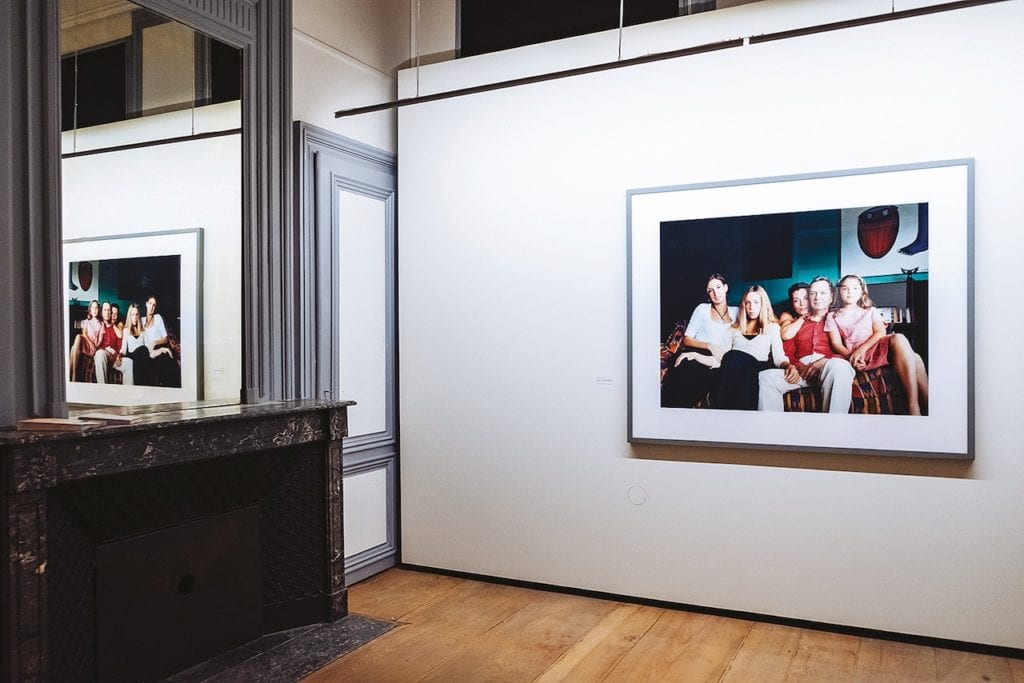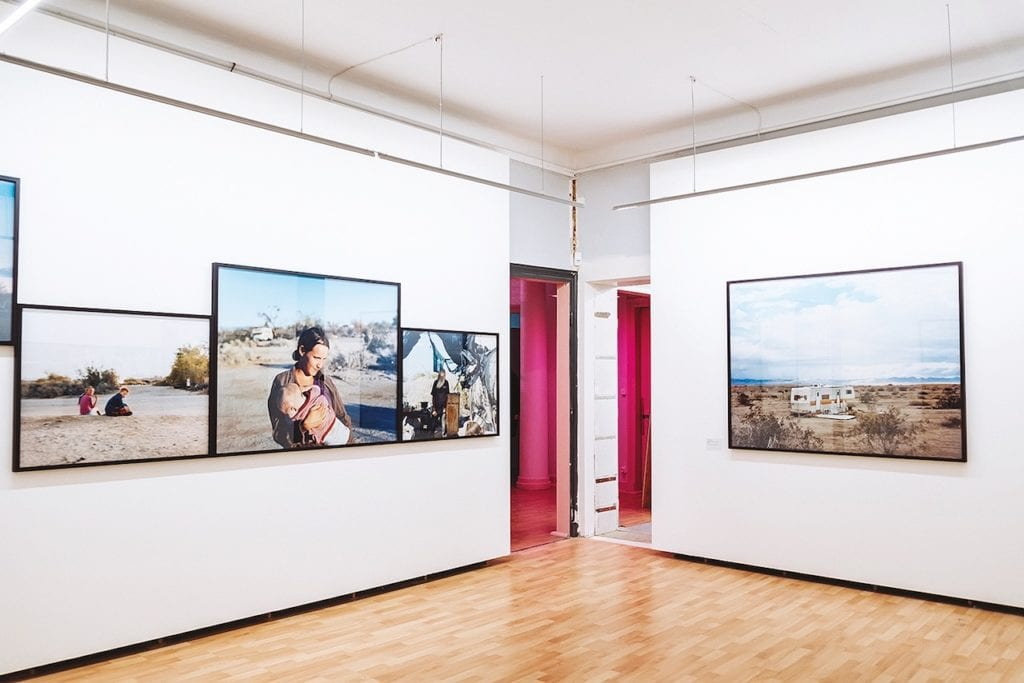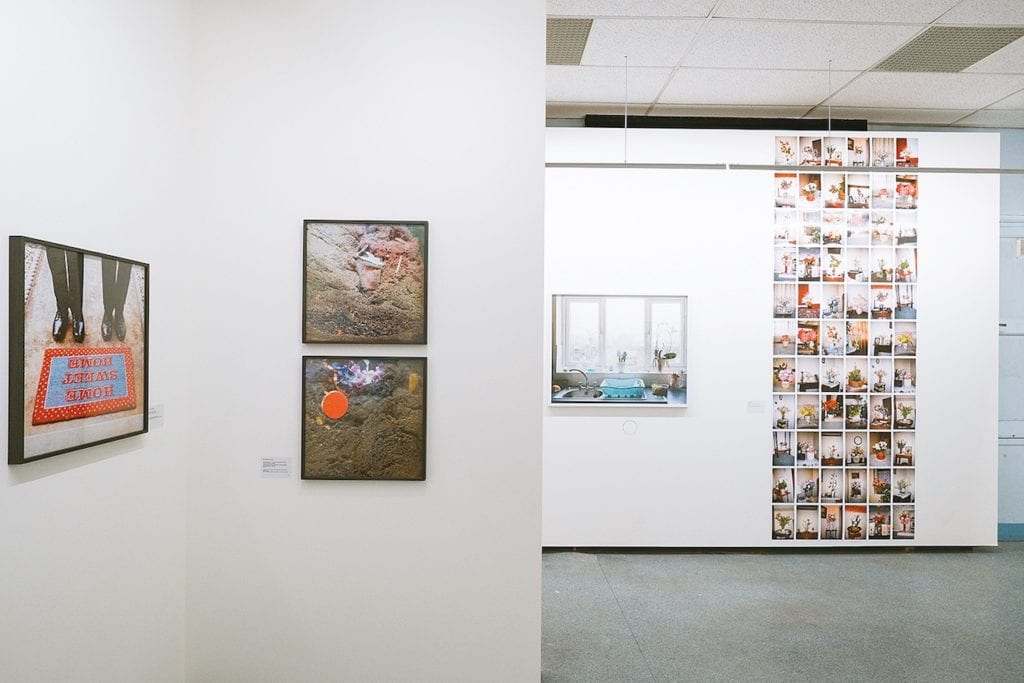This article was published in issue #7891 of British Journal of Photography. Visit the BJP Shop to purchase the magazine here.
Occupying a former school in Lille, in the neighbourhood of Vieux-Lille, Institut pour la photographie has a historic facade that hides a network of rooms linked by winding staircases and corridors. The building’s former use is still perceptible: defunct strip lights and old lino sit amongst the remaining period fireplaces, grand mirrors and ornate cornices.
This is France’s latest public institution devoted to photography – although it’s still a work in progress. The 1500 sq m space will open fully in 2021, but in the meantime it has been readied to offer a taster of what’s to come. “There was work done to create space for the public, but this was kept to a minimum,” explains Anne Lacoste, the institute’s director. “We added temporary walls and lighting to forge the exhibition space.”
The institute will undergo major
renovations next summer, but until then,
the original interior will play host to two
consecutive cultural programmes. The only one
announced so far, Extraordinary: Photographic
perspectives on everyday life, comprises seven
exhibitions (which opened in October and runs
until 15 December) and an installation, plus a
series of events and experimental workshops.

“We want to combine the past, the present and the future to develop a photographic culture for the public, and to educate the eyes,” explains Lacoste. The work featured dates from the late 19th century to the present day, representing a range of photographic approaches and perspectives on the theme.
The initiative was born out of a discussion between the Hauts-de-France regional council and Rencontres d’Arles, about what kind of photographic space the country lacked. “We started to develop the idea of an institution that would exhibit, but also be involved in research and house an archive of photographs,” explains Sam Stourdzé, Rencontre’s director. Alongside exhibitions, the institute has a varied research programme open to scholars, curators and artists. It will also host the archives of photographers working in France, and will support several print-led initiatives, including developing a reference library on the history of photographic publishing.

In conceiving the initial programme, Lacoste embraced the transience of the space. “It is about going back to the history of photography, but finding new ways to look at it,” she explains, referencing the exhibition devoted to Lisette Model. The show pays homage to the street photographer’s work and her devotion to teaching by examining the influence she had on four American practitioners: Leon Levinstein, Diane Arbus, Rosalind Fox Solomon and Mary Ellen Mark. Comprising well-known photographs by the five artists, who all explored the everyday as experienced by those on the margins, the exhibition will draw out the personal and aesthetic connections between them.
Elsewhere, Beijing World Park presents a selection from Thomas Sauvin’s monumental archival project Beijing Silvermine, the result of salvaging over half a million negatives from a recycling plant near the Chinese capital; Thomas Struth reveals the complex dynamics at play in family portraits; Laura Henno’s Radical Devotion shows her two- year engagement with a community in the Californian desert; and Emmanuelle Fructus presents her painstaking photomontages created from individuals cut out of vernacular photographs in her first monographic show.

Finally, two shows consider domestic spaces: Greetings from America looks at the American postcard from 1900 to 1940, and Home Sweet Home is a political history of the British home from 1970 to 2018, comprising projects by 30 artists that examine shifts in the social and cultural fabric of modern Britain. Co-produced with Rencontres d’Arles, this exhibition was on display at the festival over the summer – the first iteration of what will be an ongoing collaboration between the two organisations in a relationship that seeks to establish strong links between northern and southern France. Ultimately, however, the space stands alone. In Lacoste’s words, “It is the opportunity to imagine what an institution devoted to photography can be today.”
